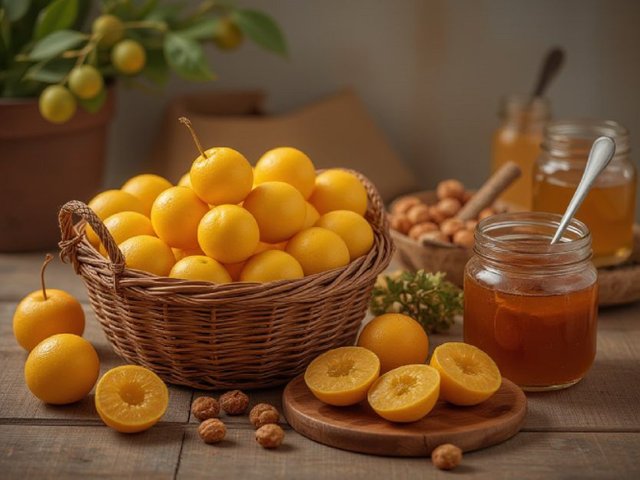Cherry Plum: The Secret to a Healthy and Delicious Winter
Hello, dear readers! Cherry plum (Prunus cerasifera) is a fruit tree or shrub from the Rosaceae family, known for its hardiness and bright sweet and sour fruits. Its homeland is the Caucasus and Asia Minor, but today cherry plum is widely grown throughout Ukraine and in the middle belt, delighting with abundant harvests at the end of summer. Cherry plum fruits are rich in vitamin C, carotene, B vitamins, potassium, magnesium, and pectin. Due to this, cherry plum strengthens the immune system, improves metabolism, and supports the work of the heart and blood vessels. The acids in the composition stimulate digestion, and pectin helps gently cleanse the body of toxins and "bad" cholesterol. Cherry plum has a low calorie content – about 35 kcal per 100 g, so it can be included in a diet. It has long been used for vitamin deficiencies, colds, and to improve appetite. Cherry plums can be harvested in various ways. The easiest is freezing: wash the fruits, dry them, and put them in containers or bags. This preserves the maximum amount of vitamins. For compotes and jams, cherry plums can be sorted, pitted, and boiled with sugar (usually in a 1:1 ratio). Cherry plums make a fragrant jam, marmalade, and sauces, such as the famous tkemali. For drying, the fruits are cut in half, the pit is removed, and they are dried in the attic or in an electric dryer or oven at a temperature of 50–60 °C. Dried cherry plums are well stored in glass jars and used for compotes or as a sour addition to dishes. With proper harvesting, cherry plums retain their taste and beneficial properties until the new harvest, becoming a vitamin reserve for the winter. They not only diversify the menu but also bring tangible health benefits. Don't forget to like and subscribe for more interesting information.
